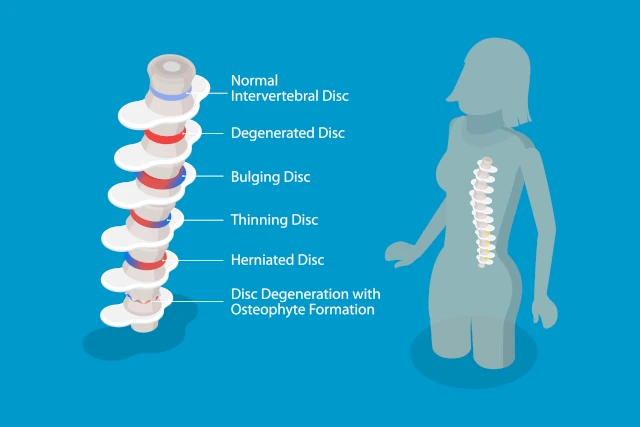
Shoulder Pain Relief: Top Stretches and Exercises to Reduce Pain and Improve Mobility
- Dr. Neha Sharma (PT)
Connect with our expert physiotherapist for personalized physiotherapy advice.
Shoulder pain is one of the most common musculoskeletal complaints, affecting people of all ages. Whether it’s due to overuse, injury, poor posture, or age-related wear and tear, shoulder pain can be debilitating and disrupt daily activities. The good news is that with the right exercises and stretches, you can find relief and improve shoulder mobility. This blog will guide you through effective ways to relieve shoulder pain and speed up recovery.
Common Causes of Shoulder Pain
Understanding the cause of your shoulder pain is the first step toward relief. Here are some common conditions that may lead to discomfort:
- Rotator Cuff Injuries: The rotator cuff is a group of muscles and tendons that stabilize the shoulder. Tears or strains can cause pain, weakness, and limited movement.
- Frozen Shoulder (Adhesive Capsulitis): This condition causes stiffness and pain in the shoulder joint, often due to inflammation and scarring of the capsule surrounding the joint.
- Shoulder Impingement: Occurs when the tendons of the rotator cuff muscles get compressed during shoulder movements, leading to pain and limited range of motion.
- Bursitis: Inflammation of the bursa, a fluid-filled sac in the shoulder, often caused by repetitive movements or overuse.
- Arthritis: Osteoarthritis or rheumatoid arthritis can affect the shoulder joint, leading to pain and stiffness, especially in older adults.
Effective Exercises and Stretches for Shoulder Pain Relief
Performing targeted exercises and stretches can help reduce shoulder pain, increase strength, and improve flexibility. Below are some exercises and stretches commonly used in physiotherapy treatment for shoulder pain:
1. Pendulum Swing
The pendulum swing is a gentle exercise that helps relieve tension in the shoulder joint.
How to Perform:
- Stand with your feet shoulder-width apart and bend at the waist.
- Allow the affected arm to hang loosely at your side.
- Gently swing your arm forward and backward in small circles.
- Gradually increase the range of motion as it feels comfortable.
Benefits: Increases blood circulation and range of motion, especially after an injury or surgery.
2. Shoulder Blade Squeeze
This exercise targets the muscles around the shoulder blades and upper back, helping improve posture and reduce pain.
How to Perform:
- Sit or stand with your back straight.
- Squeeze your shoulder blades together as if trying to pinch a pencil between them.
- Hold for 5 seconds, then relax.
- Repeat 10-15 times.
Benefits: Strengthens the upper back and shoulders, reduces tension, and improves posture.
3. Doorway Stretch
The doorway stretch is a great way to improve flexibility and reduce tightness in the chest and shoulders.
How to Perform:
- Stand in a doorway with your arms bent at 90 degrees.
- Place your forearms against the doorframe.
- Gently lean forward, stretching your chest and shoulders.
- Hold the stretch for 20-30 seconds, then relax.
- Repeat 2-3 times.
Benefits: Stretches the chest muscles, which often become tight and contribute to shoulder pain.
4. External Rotation with Resistance Band
This exercise strengthens the rotator cuff muscles, which play a key role in stabilizing the shoulder.
How to Perform:
- Attach a resistance band to a door or stable object.
- Hold the band with your elbow bent at 90 degrees, keeping your upper arm close to your body.
- Rotate your forearm outward, away from your body.
- Slowly return to the starting position.
- Repeat 10-15 times on each arm.
Benefits: Strengthens the rotator cuff and improves shoulder stability.
5. Wall Angels
Wall angels are an excellent exercise to improve shoulder mobility and strengthen the upper back.
How to Perform:
- Stand with your back against a wall, feet a few inches away from the wall.
- Press your lower back, upper back, and head against the wall.
- Raise your arms to form a W shape with your elbows bent.
- Slowly slide your arms up the wall to form a Y then return to the starting position.
- Repeat 10-15 times.
Benefits: Improves shoulder mobility, strengthens the upper back, and helps with posture.
Additional Tips for Shoulder Pain Relief
- Rest and Ice: For acute shoulder pain or inflammation, apply ice to the shoulder for 15-20 minutes every few hours during the first 48 hours to reduce swelling.
- Correct Posture: Poor posture, especially while sitting at a desk or using electronic devices, can strain the shoulder. Keep your shoulders relaxed and avoid slouching.
- Avoid Repetitive Movements: If your shoulder pain is caused by overuse, avoid activities that aggravate it. Give your shoulder time to rest and recover.
- Strengthen Supporting Muscles: Strengthening the muscles around the shoulder, including the upper back and core, can help prevent further injury and improve stability.
When to Seek Professional Help
While these exercises can help relieve mild to moderate shoulder pain, it’s essential to seek professional treatment if the pain persists or worsens. A physiotherapist can assess your condition and design a personalized treatment plan to address the underlying cause of your shoulder pain.
Signs you should see a physiotherapist:
- Persistent pain despite rest and exercises.
- Inability to lift the arm or perform basic tasks.
- Numbness or tingling in the arm or hand.
- Severe pain or swelling.
Conclusion
Shoulder pain can be a hindrance to daily activities, but with the right exercises and stretches, you can relieve discomfort and regain shoulder function. Consistency is key, so make sure to incorporate these exercises into your routine and focus on maintaining good posture to prevent further issues. For persistent or severe shoulder pain, consult a physiotherapist for a tailored treatment plan.
Connect with our expert physiotherapist for personalized physiotherapy advice.



